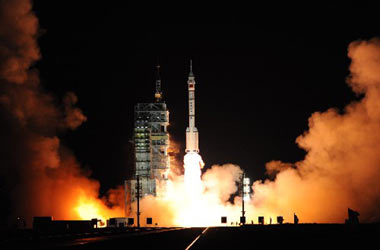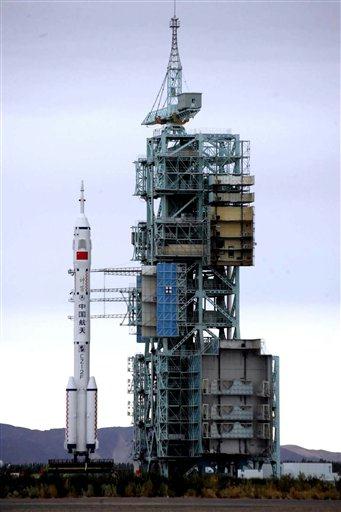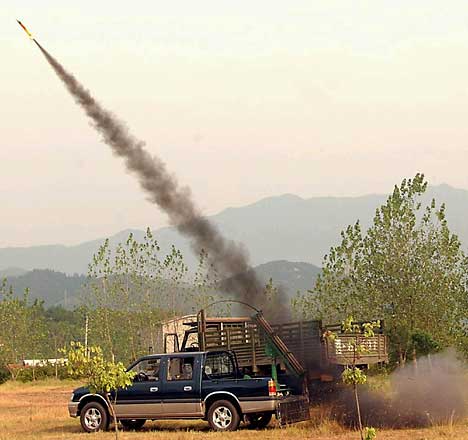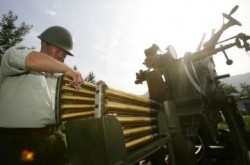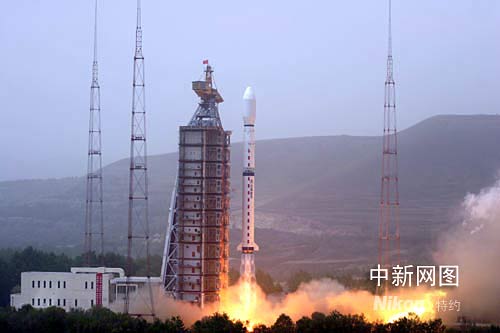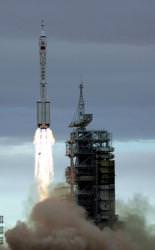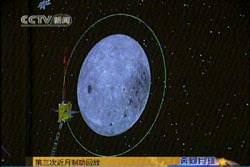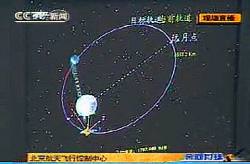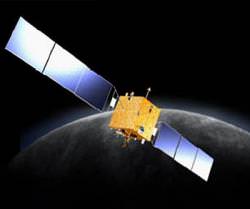[/caption]
China successfully launched its third manned spacecraft today with three astronauts on board. During the mission, they will attempt the country’s first-ever space walk. The Long March II-F rocket carrying the Shenzhou-7 spacecraft blasted off from the Jiuquan Satellite Launch Center in the northwestern Gansu Province at 9:10 p.m. local time. Onboard pilots Zhai Zhigang, Liu Boming and Jing Haipeng are will orbit Earth for three days. The astronauts, called taikonauts, told the ground control center that they felt “physically sound” in the first few minutes of the flight.
Two of the taikonauts will conduct a spacewalk, wearing Chinese-made spacesuits called Feitian which literally means flying in the sky, and is the name of a legendary Buddhist goddess. They will retrieve test samples loaded on the outside of the spacecraft, said Zhou Jianping, chief designer of the country’s manned space project.
“We wish we could fly freely in space just like Feitian on the ancient Buddhist murals, so we gave this name to the homemade spacesuit,” said Zhou.

The third taikonaut will remain inside the pressurized spacecraft, and will wear a Russian Orlan suit.
Other tasks of the Shenzhou-7 crew include the release of a small monitoring satellite and a trial of the data relay of the satellite Tianlian-I.
If successful, the mission would be of great significance to the country’s future plans to build a space lab and a space station, said Zhang Jianqi, deputy chief commander of the manned space project. “China pursues the principle of making peaceful use of space in its exploration and development,” Zhang said, adding the country was willing to carry out various forms of international cooperation in space exploration.
The taikonauts, all 42 years old, are scheduled to land in the central region of north China’s Inner Mongolia Autonomous Region in a re-entry module after their mission is completed
Source: Xinhuanet

